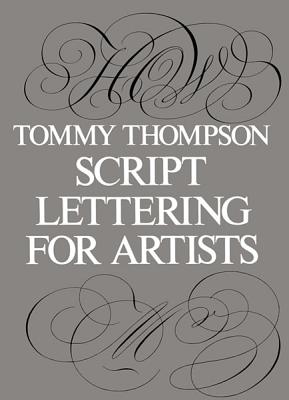
description
8One feature of the general resurgence of the graphic arts is the revival of the script letter. Media such as advertising, packaging, book and periodical page designs, etc. have brought the glories of the master penmen of the past back into vogue. This volume, prepared by a noted authority and containing numerous examples of his handiwork, is a basic guide to the construction of the script letter and its practical use.
The book gives the beginner a thorough, straightforward course of instruction, with advice on virtually every facet of the art of script lettering. In his clear and economical presentation, the author tells you how to hold the pen, how the letters should be slanted, how to "build" the letters out of a few primary strokes, the direction of the pen in inking, and every other step of the process. He also deals with the construction of numerals, the flourish and its basic elements, how to correct mistakes, commercial handwriting, etc and gives a concise introduction to layout and package design. Throughout his account, Thompson stresses materials, tools, and equipment needed and provides exact specifications, brand names, penpoint types and sizes, and the like.
The history of lettering is also briefly sketched, and there are examples from early copybooks, including the work of some of the famous penmen and engravers of history: Bickham, Tompkins, Cocker, Barbedor, and others. In addition, the book offers dozens of illustrations of script work in present-day advertising and packaging, together with samples of various styles (round hand, b tarde, coul e, free style, and more). All this illustrative material furnishes excellent models for study and practice.
This, then, is an essential book for every art director and designer concerned with lettering. It is also a fundamental text used in advertising and commercial art courses throughout the country; no student in the field should be without a copy.
The book gives the beginner a thorough, straightforward course of instruction, with advice on virtually every facet of the art of script lettering. In his clear and economical presentation, the author tells you how to hold the pen, how the letters should be slanted, how to "build" the letters out of a few primary strokes, the direction of the pen in inking, and every other step of the process. He also deals with the construction of numerals, the flourish and its basic elements, how to correct mistakes, commercial handwriting, etc and gives a concise introduction to layout and package design. Throughout his account, Thompson stresses materials, tools, and equipment needed and provides exact specifications, brand names, penpoint types and sizes, and the like.
The history of lettering is also briefly sketched, and there are examples from early copybooks, including the work of some of the famous penmen and engravers of history: Bickham, Tompkins, Cocker, Barbedor, and others. In addition, the book offers dozens of illustrations of script work in present-day advertising and packaging, together with samples of various styles (round hand, b tarde, coul e, free style, and more). All this illustrative material furnishes excellent models for study and practice.
This, then, is an essential book for every art director and designer concerned with lettering. It is also a fundamental text used in advertising and commercial art courses throughout the country; no student in the field should be without a copy.
member goods
No member items were found under this heading.
Return Policy
All sales are final
Shipping
No special shipping considerations available.
Shipping fees determined at checkout.







